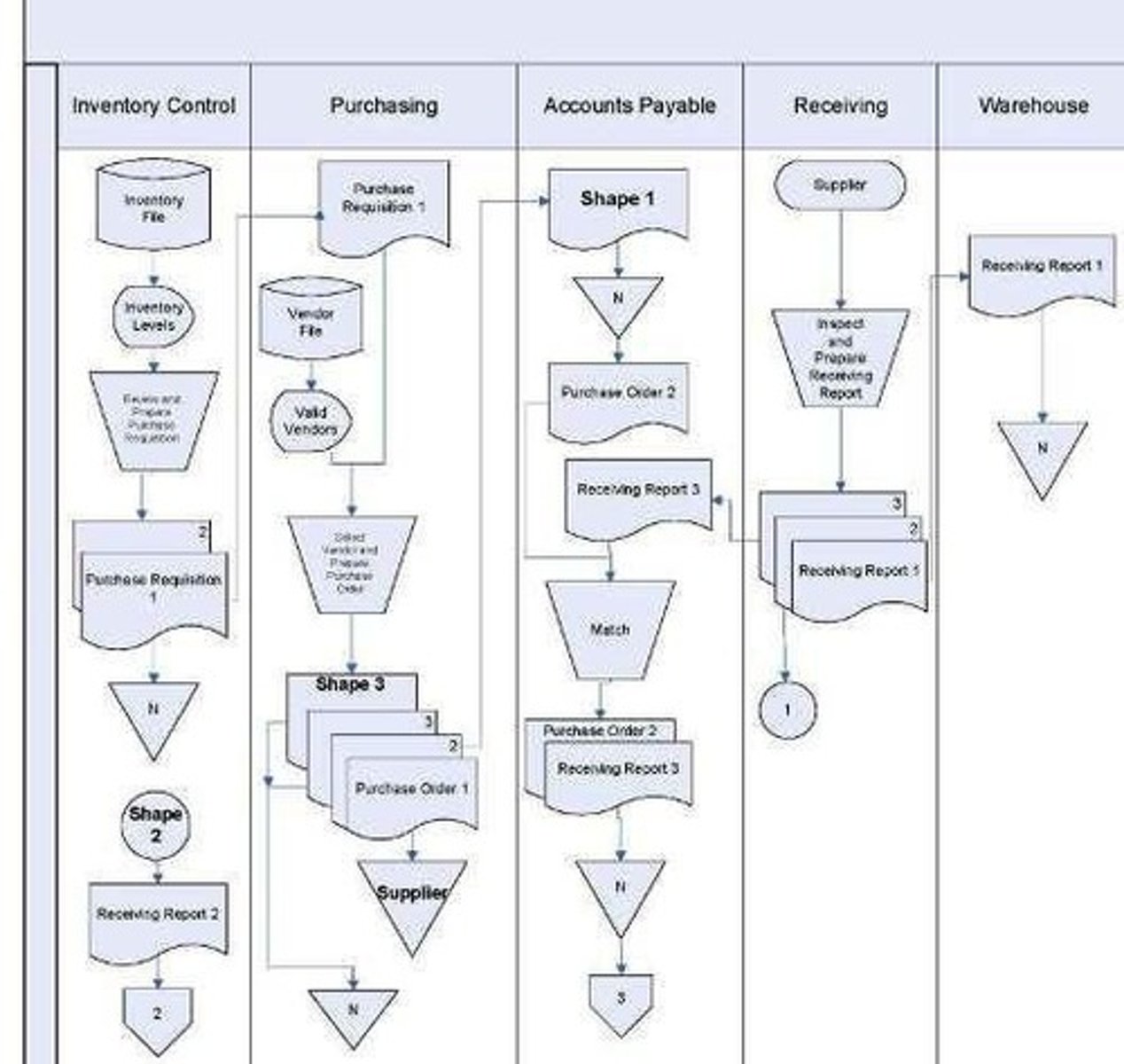ACCT360: Accounting Information Systems TEST 1
1/53
There's no tags or description
Looks like no tags are added yet.
Name | Mastery | Learn | Test | Matching | Spaced |
|---|
No study sessions yet.
54 Terms
Information
data that has been organized and processed so that it is meaningful to the user.
Value of information
the benefits associated with obtaining the information minus the cost of producing it.
Timely information
reduces uncertainty, improves decision makers' ability to make predictions, or confirms expectations.
Reliable information
free from error or bias and accurately represents the events or activities of the organization.
Verifiable information
characteristic of useful information that allows auditors to reproduce financial reports.
Query languages
can gather relevant data for decision making.
Data input process
commonly initiated by a business activity.
Source document
a document that provides evidence of a business transaction.
Expenditure cycle
the cycle that includes updating accounts payable based on purchase orders and checks.
Delivery ticket
a document found in the expenditure cycle.
Purchases journal
the accounting record where a delivery of inventory from a vendor is initially recorded.
Revenue cycle transaction
the most frequent transaction is the sale to customer.
Sarbanes Oxley Act
requires public companies to prepare an annual internal control report.
Documentation skills
made even more important by the Sarbanes Oxley Act.
Flowcharts
documentation tools that auditors must be able to prepare, evaluate and read.

Premier Life Company
a life insurance company that collects, stores, prepares and provides customized life insurance policies.
Database
a structured set of data held in a computer.
Accounting records
documents that track financial transactions.
Financial statements
summaries of the financial status of a company.
Shipping document
evidence of goods being sent to a customer.
Sales journal
a record of sales transactions.
Ledger
a book or other collection of financial accounts.
Credit memo
a document issued to reduce the amount owed by a customer.
Cash disbursements journal
a record of cash payments made by a business.
life insurance policy
A contract that provides financial protection to beneficiaries upon the death of the insured.
data flow diagram
A visual representation of the flow of data within a system.
policy underwriters
Individuals or entities responsible for evaluating and assuming the risk of insuring clients.
flowchart
A diagram that represents a process or workflow.
Purchase Order
A document issued by a buyer to a seller indicating the details of a purchase.
Purchase Requisition
A document used to request the purchase of goods or services.
Accounts Payable Trial Balance
A report that lists all outstanding liabilities owed to suppliers.
sales file
A record of all sales transactions made by a business.
shipping file
A record of all shipments made by a business.
sale receipt
A document provided to a customer as proof of a sale.
ERP
Enterprise Resource Planning, a type of software used to manage business processes.
master data
Core data essential to operations in a specific business or business unit.
theft of cash
The act of stealing cash from a business.
Separation of billing and shipping functions
A control measure that divides responsibilities to reduce the risk of fraud.
cash registers
Devices used to record sales transactions and manage cash.
bar-code and RFID technology
Technologies used to track inventory and sales.
credit sales
Sales made on credit, where payment is received at a later date.
uncollectible receivables
Accounts receivable that are unlikely to be collected.
segregation of duties
A control principle that divides responsibilities among different individuals.
Physical inventory count
A process of counting physical inventory to ensure accuracy.
RFID tags
Radio-frequency identification tags used for tracking items.
revenue cycle
The process of managing the income generated from sales.
safety stock
Extra inventory kept on hand to prevent stockouts.
just-in-time production
An inventory management strategy that aligns production with demand.
economic order quantity
A formula used to determine the optimal order quantity that minimizes total inventory costs.
approved supplier list
A list of suppliers that have been vetted and approved for purchasing.
debit memo
A document issued to adjust the amount owed to a supplier.
nonvoucher system
An accounting system that posts invoices directly to accounts payable.
voucher system
An accounting system that uses vouchers to control payments.
evaluated receipt settlement
A system that automatically matches invoices with purchase orders.